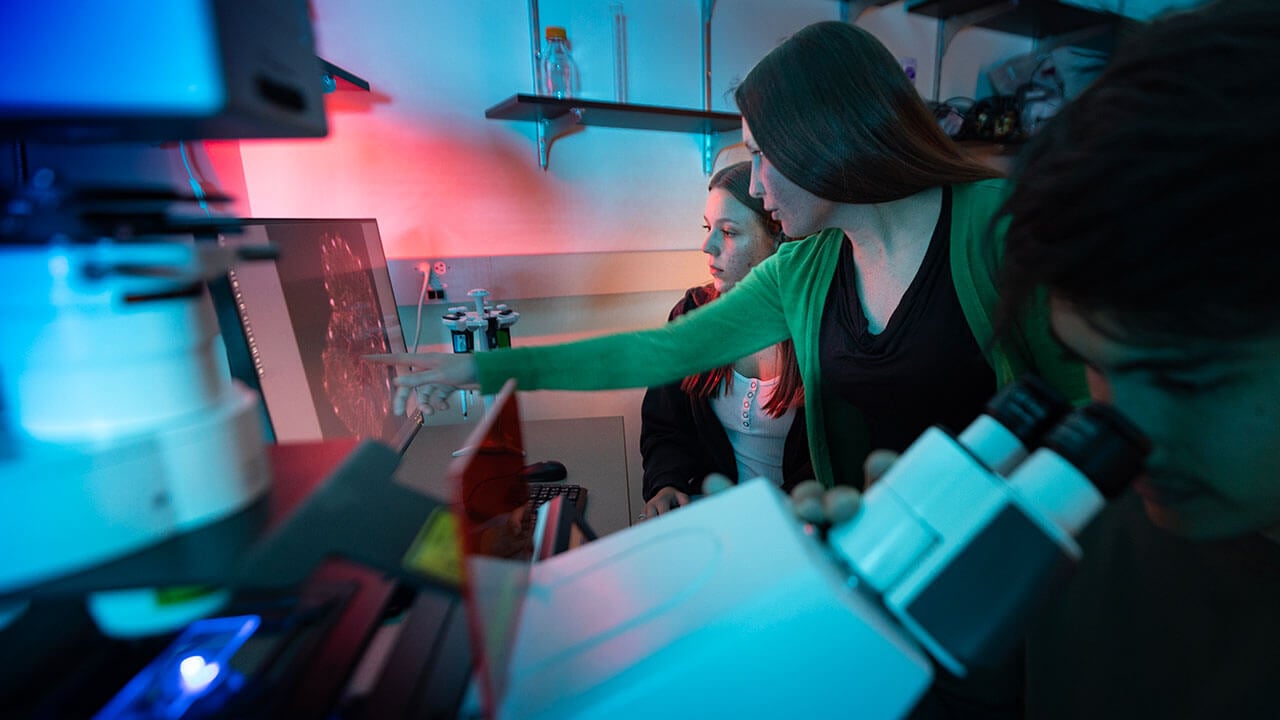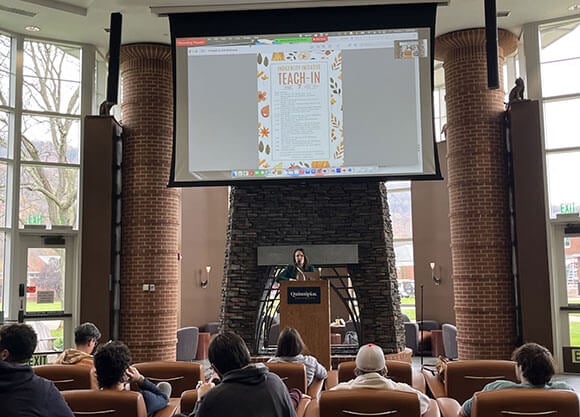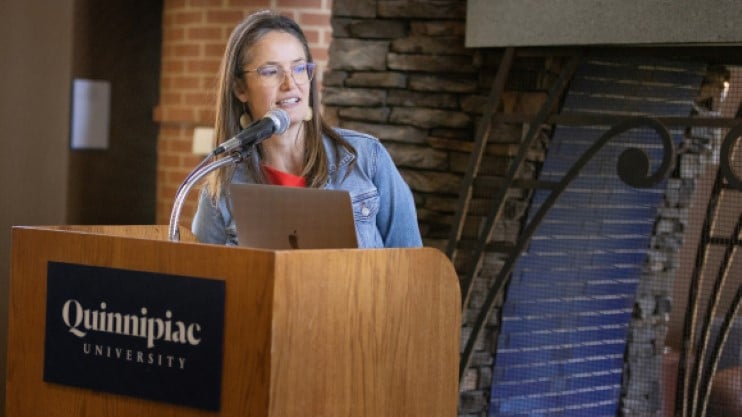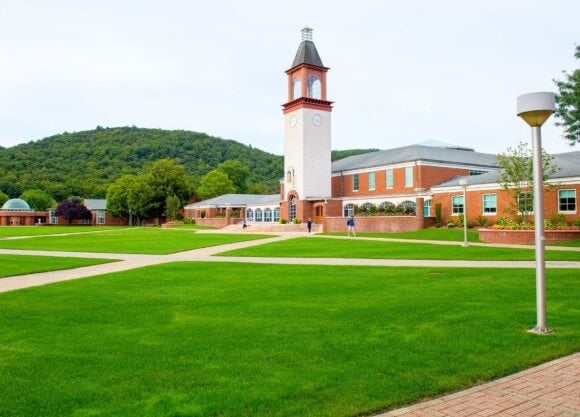
Associate Professor of Biology
Dr. Hanlon's research focuses on the characterization of Drosophila (fruit fly) G-protein coupled receptors (GPCRs) during embryonic development. GPCRs are one of the largest and most widely expressed protein families, found in all manners of life from bacteria to humans. Despite GPCR's prominence throughout biology, they have been surprisingly understudied during Drosophila development. Dr. Hanlon's research allow students to explore questions relating to genetics, cell biology, and developmental biology. More recently, she has leveraged her research training to better understand how the Blacklegged tick is able to transmit disease.
Dr. Hanlon currently serves as the faculty liaison to the Natural Sciences Living and Learning Community. She is also a member of the Student Affairs committee and the QUWAC Steering Committee.
Education
- PHD, Johns Hopkins University
Areas of Expertise
- Developmental biology
- Genetics
- Genetics pedagogy
- Cell biology
- Drosophila embryogenesis
Organization
- Biological Sciences
Office Location
- Buckman Center 123
Mail Drop
- BC-SCI
Experience
Quinnipiac University
Assistant Professor of Biology
Hamden, CT
2018 - Present
Johns Hopkins University School of Medicine
Post doctoral fellow
Baltimore, MD
2015 - 2018
Johns Hopkins University School of Medicine
Graduate student
Baltimore, MD
2007 - 2015
Selected Publications
Invited Speaker
Migration mystery: Identifying the ligand for an orphan GPCR
Caitlin Hanlon
Sigma Xi Quinnipiac Chapter, Hamden, CT, Quinnipiac University (2023)
Conference Presentation
LacApp: A Platform to Help Students Master Gene Regulation Through Retrieval Practice
Tom Torello, Paul Wolujewicz, and Caitlin Hanlon
64th Annual Drosophila Conference, Chicago, Genetics Society of America (2023)
Peer Reviewed Journal
Design and initial user experience of a computer-based decision-support tool to improve safety of chemotherapy delivery
Hanlon C, Goldberg H, Liang A, Spjut A, and Cooper S.
Health and Technology 1-5 May 25 (2023)
Conference Presentation
Characterization of adhesion and secretin GPCRs in the salivary glands and germ cells during Drosophila embryogenesis
Sean Riccard and Caitlin Hanlon
63rd Annual Drosophila Conference, San Diego, Genetics Society of America (2022)
Conference Presentation
Salivary Gland and Germ Cell Migration With Single Gene Knock-Down in Drosophila Melanogaster Embryos
Olivia Dempson, Scott Korman, and Caitlin Hanlon
Spring 2022 Biology Poster Session, Hamden, CT, Quinnipiac University (2022)
Peer Reviewed Journal
Hedgehog signaling and Tre1 regulate actin dynamics through PI(4,5)P2 to direct migration of Drosophila embryonic germ cells.
Kim JH, Hanlon CD, Vohra S, Devreotes PN, Andrew DJ.
34(9) Cell Reports Mar (2021)
Peer Reviewed Journal
Recognizing reflection: Computer-assisted analysis of first-year medical students’ reflective writing
Hanlon C, Frosch E, Gibson A, Buckingham-Shum S, Shochet R, and Goldberg H.
Medical Science Educator 1-8 (2020)
Peer Reviewed Journal
Development and Validation of a Capacity for Wonder Scale for Use in Educational Settings
Geller G, Steinman C, Caldwell M, Goldberg H, Hanlon C, Wonnell T, and Merritt MW
Journal of Psychoeducational Assessment (2020)





